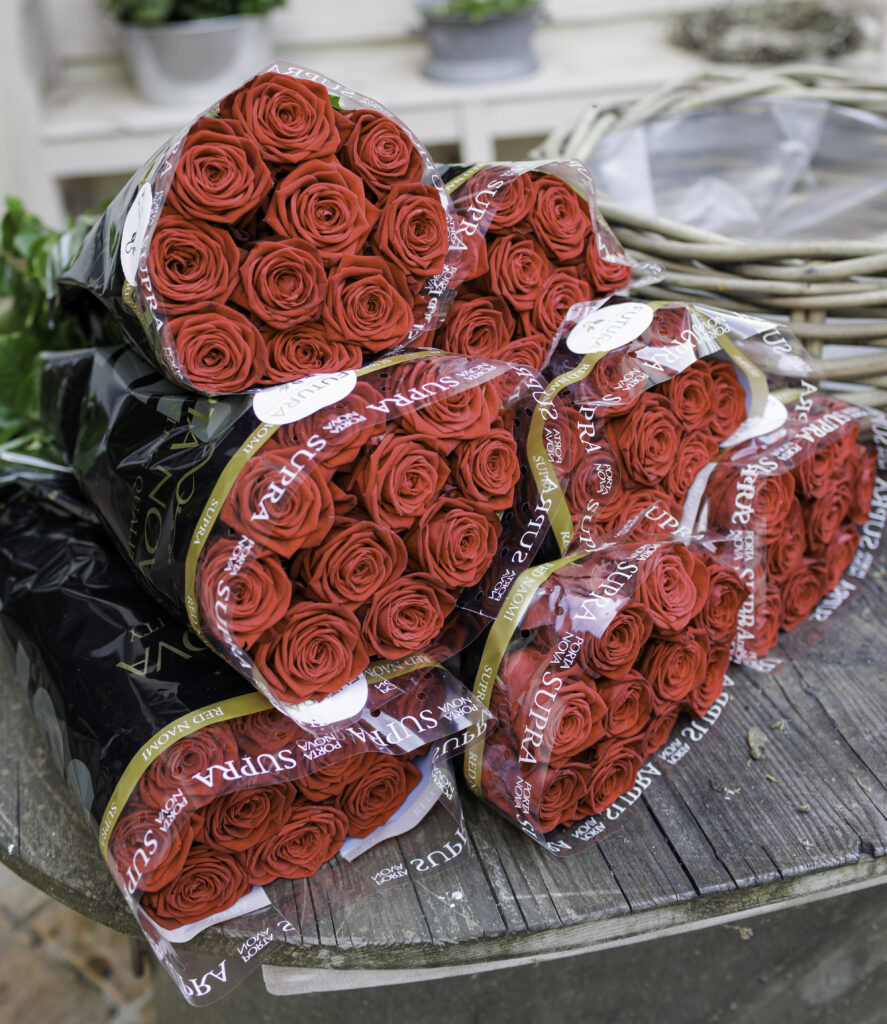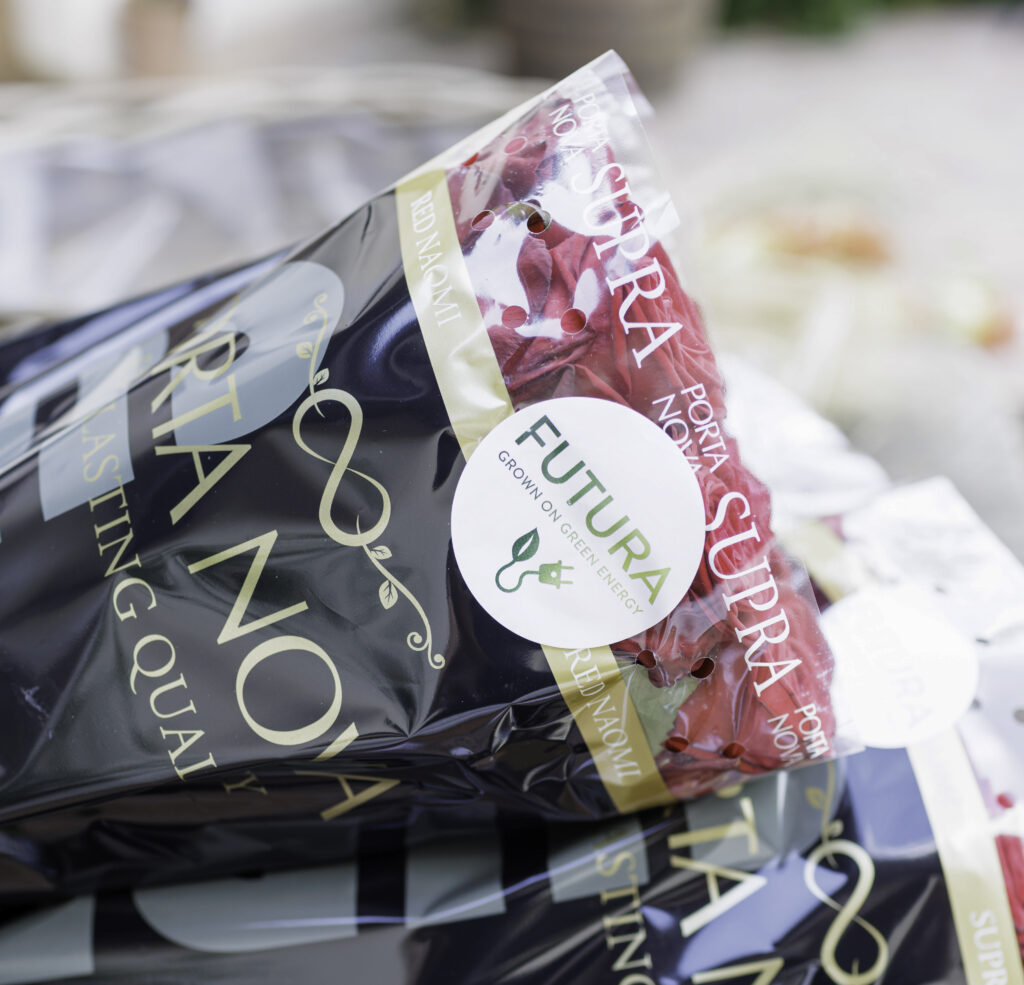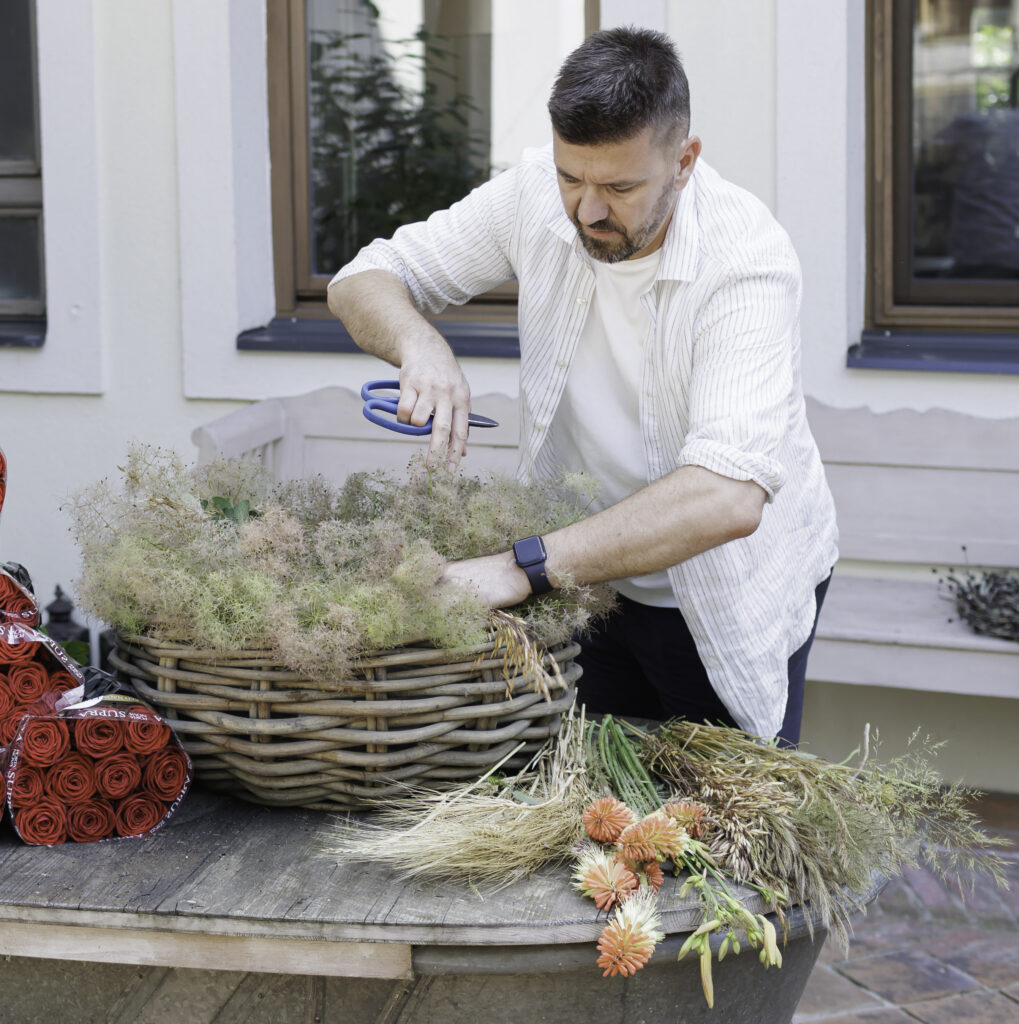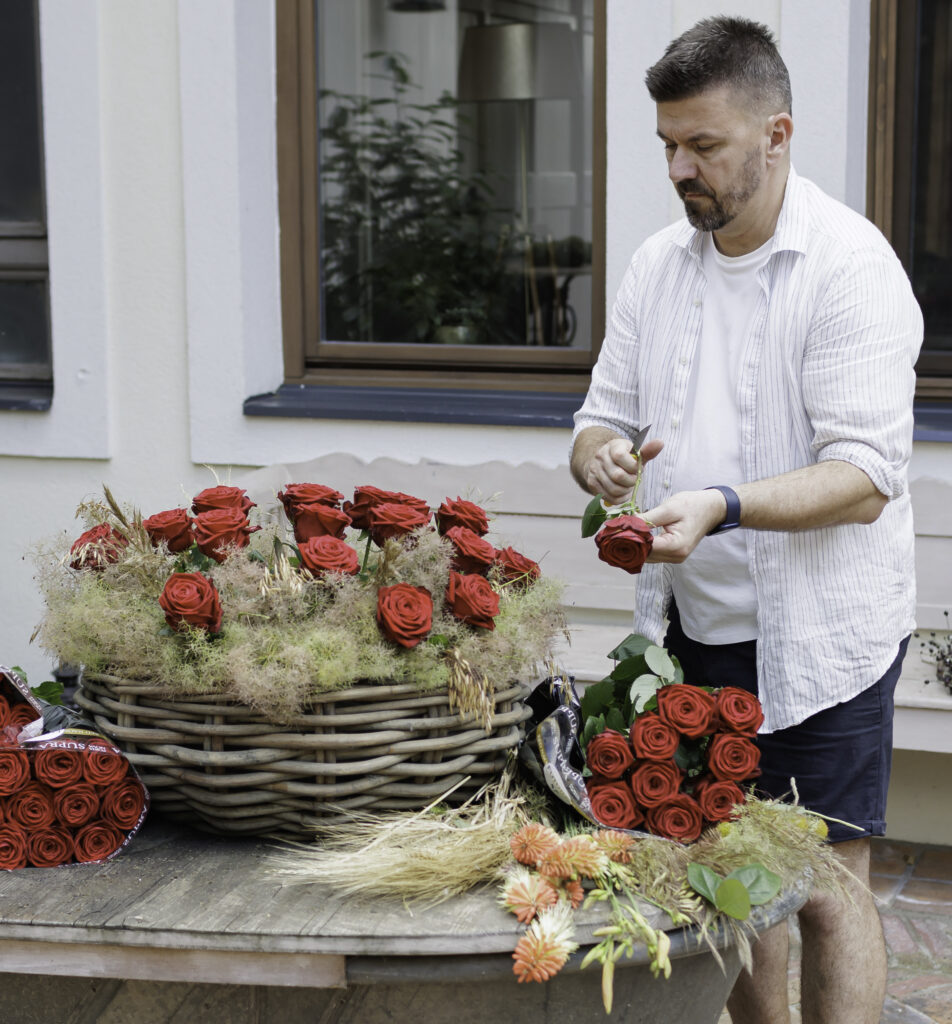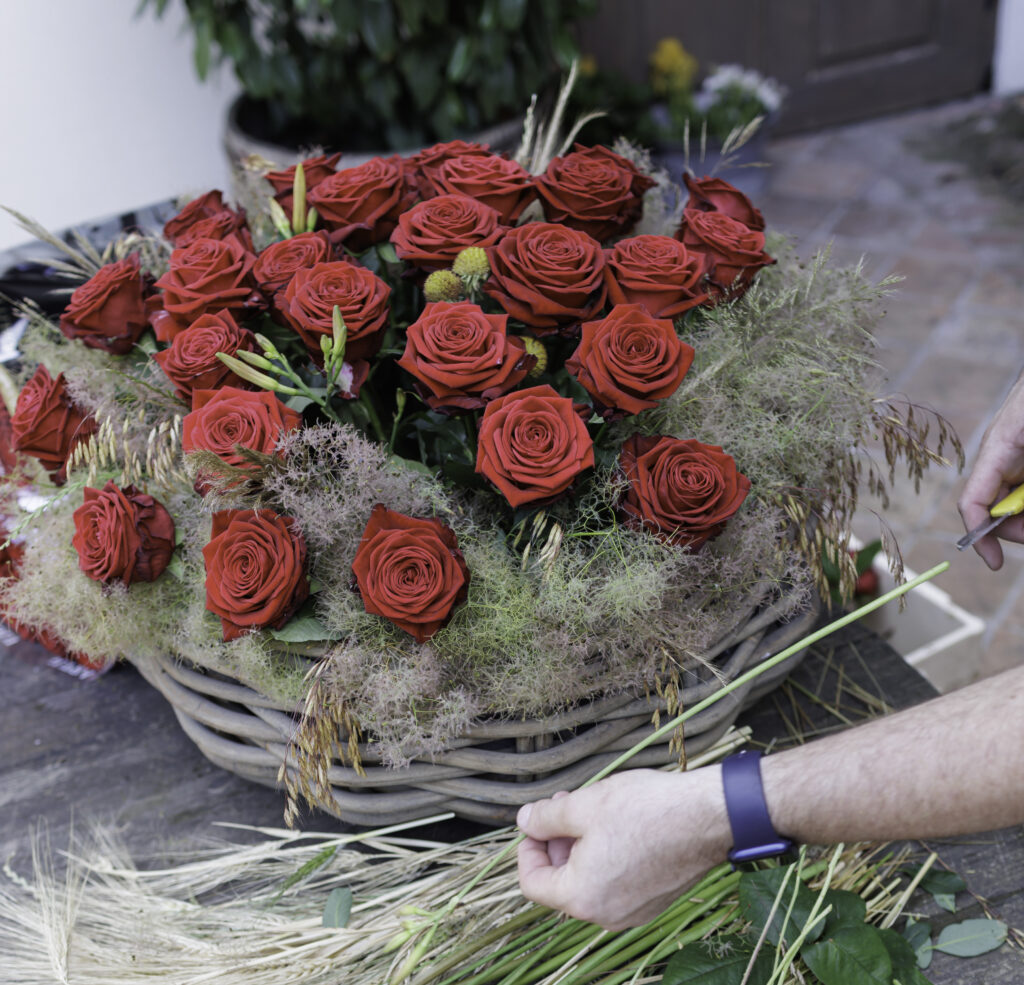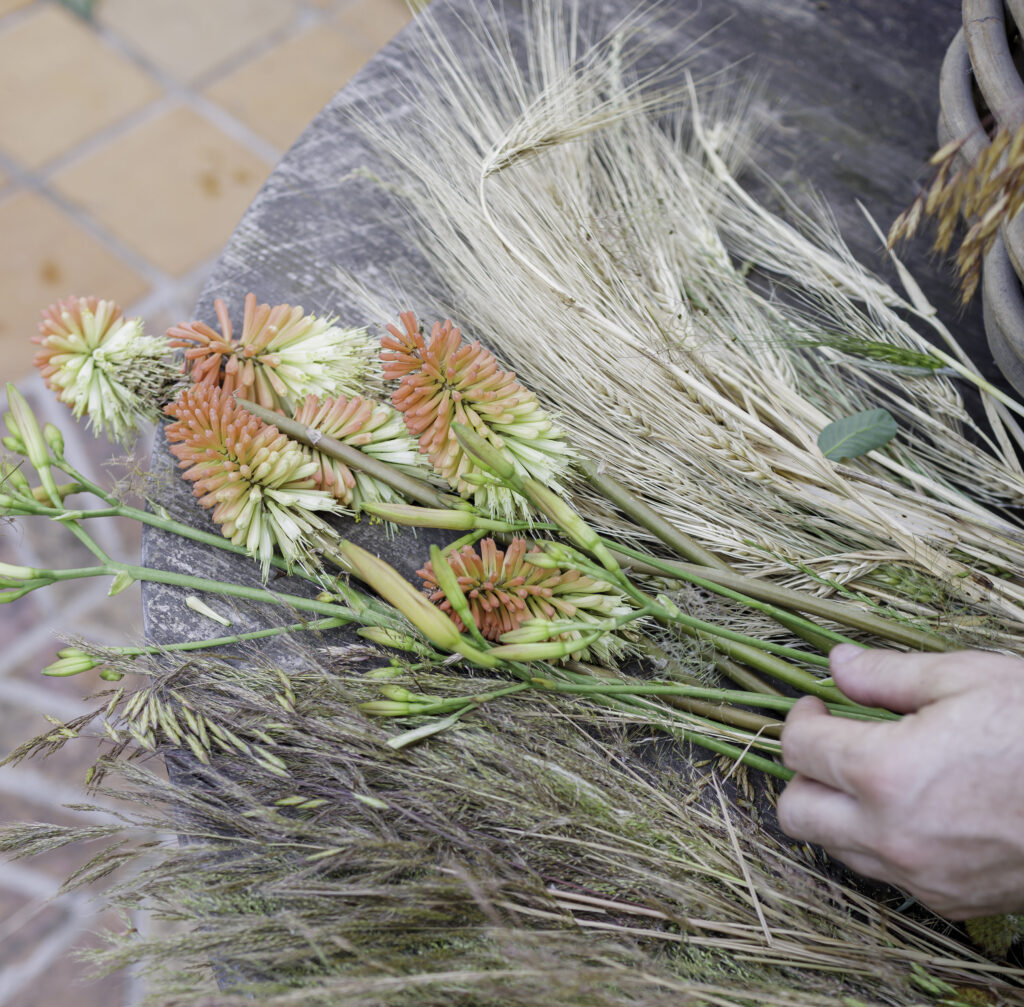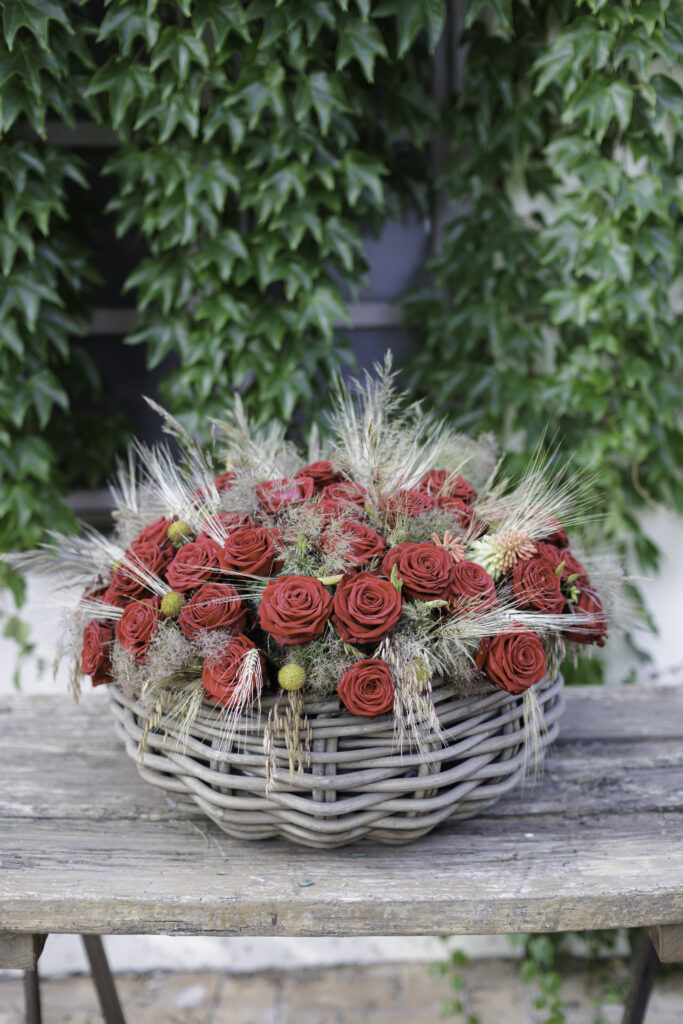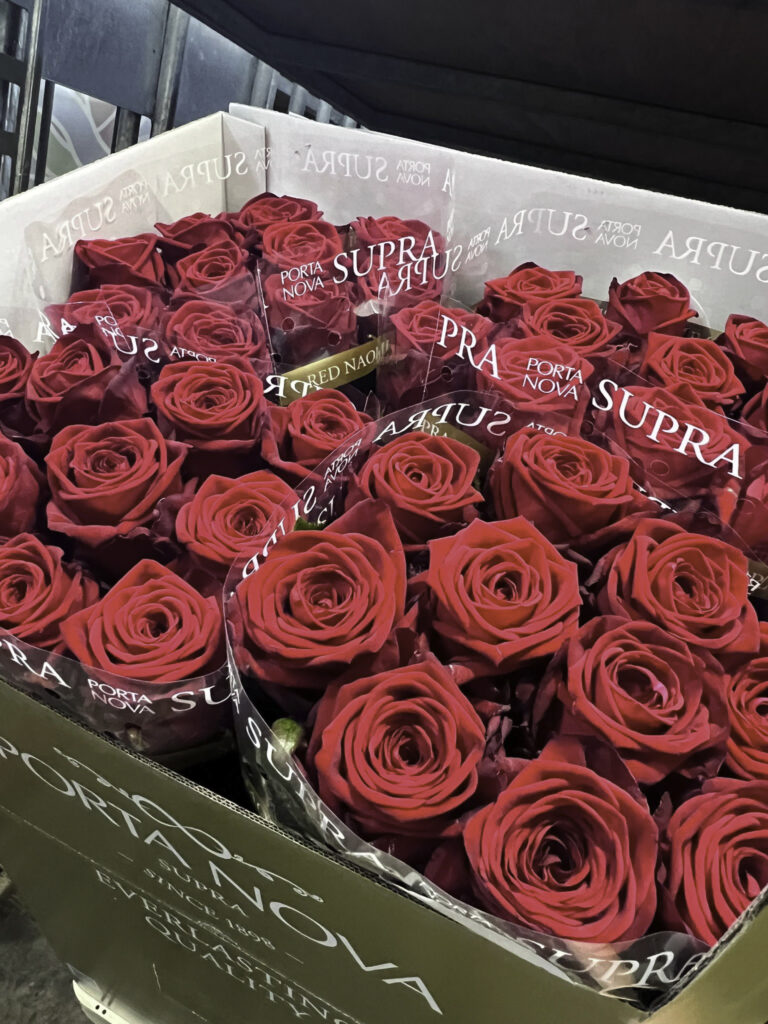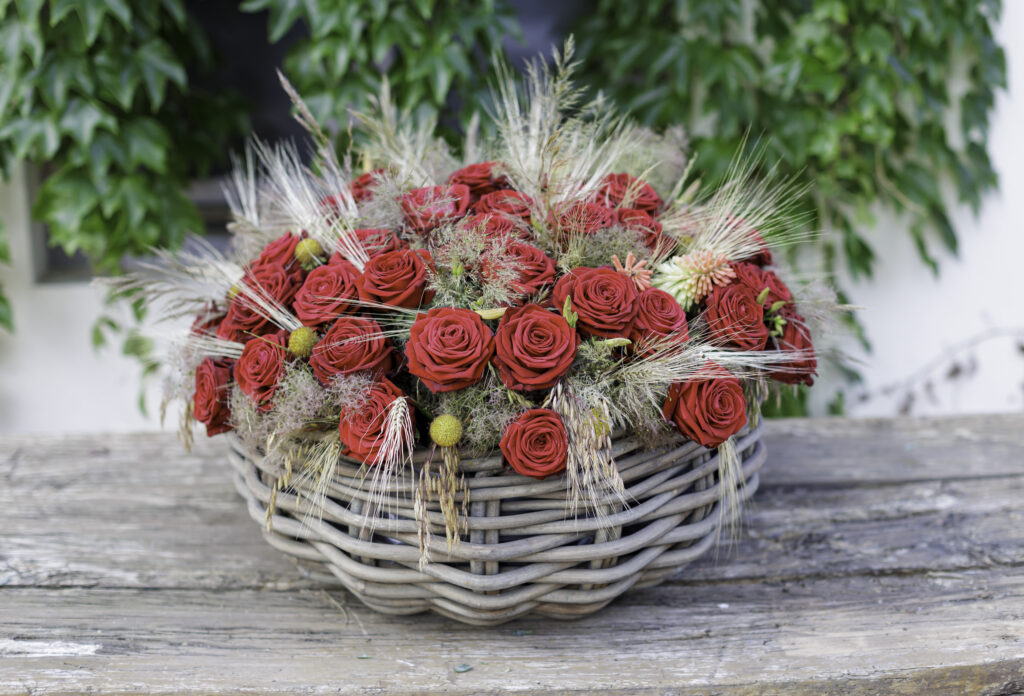
To promote sustainability within the floriculture industry, we’ve called on our florist community to take part in a purposeful challenge: design beautiful floral arrangements using Red Naomi Futura roses: celebrating life’s special moments while making environmentally conscious floral art. Red Naomi FUTURA stands out as the rose with the lowest carbon footprint available on the European market.
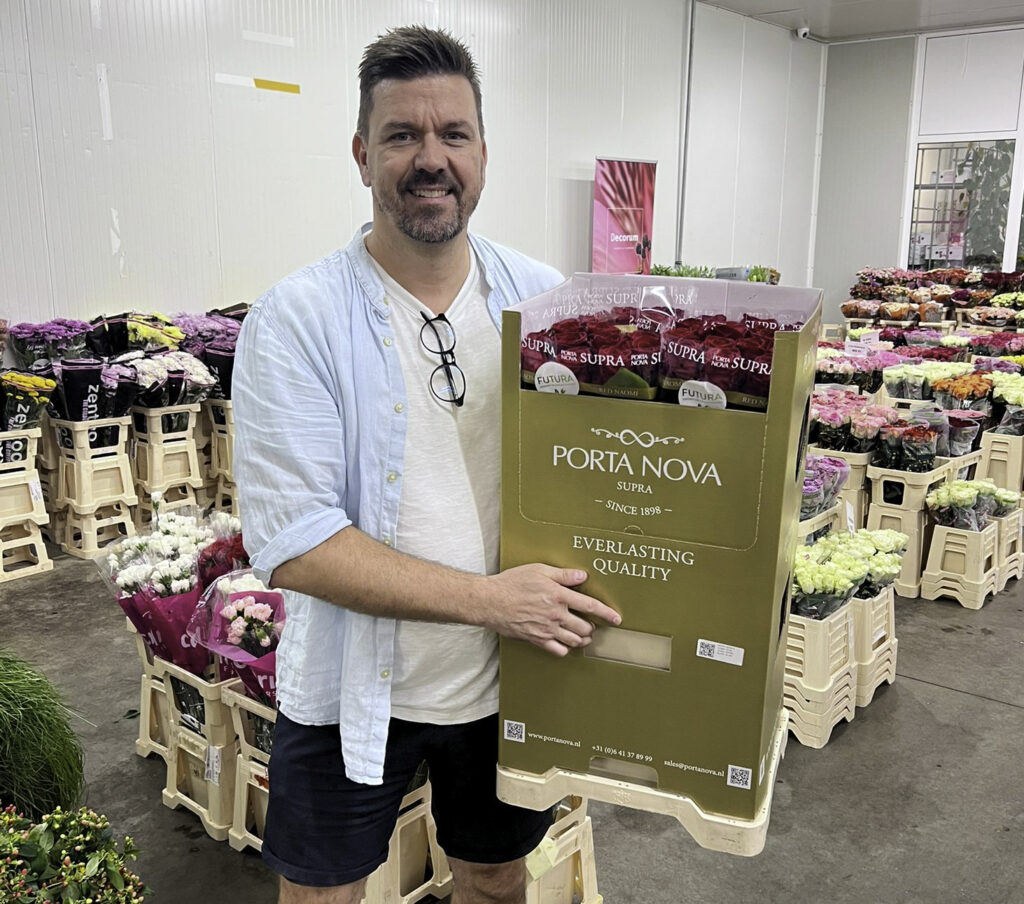
The next floral artist to take up our challenge, after our freinds from Stilfloristerna i Linköping, is Krisztián Kövér, an award-winning master florist, entrepreneur and teacher from Hungary. He is a respected name in floristry, having won the Hungarian Championships in 2018 and emerging 3rd in 2019. He also won the “Best Floral Shop” title in 2007. Here’s his story on sustainable floristry and about this beautiful composition he calls FUTUR(A)E LOVE!
Let’s start by getting to know you a bit more.
I’ve been working as a floral designer for 32 years. I used to run my own flower shops, so I have a deep understanding of how floristry operates on a daily basis—what expectations florists face, and how customers make their decisions.
For many years now, I’ve been giving demonstrations and teaching, and over the last 8–10 years I’ve focused almost exclusively on education. I believe it’s important to bring the different players in our profession closer together—growers, florists, and customers, both in Hungary and abroad.
I’m a member of the Floral Fundamentals collective and serve as a brand ambassador for several international companies such as Decorum, Marginpar, Lehner Wool, and HR Thewireman. I also maintain strong partnerships with numerous Hungarian and international brands.
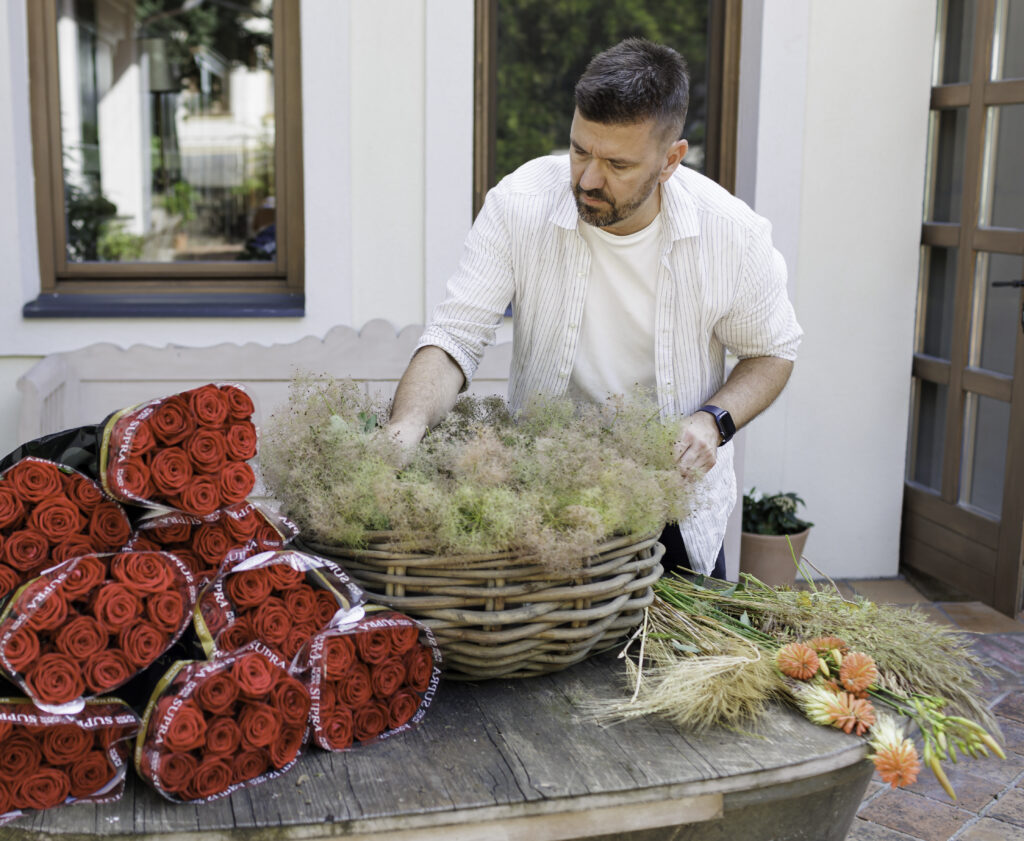
These days, my inspiration mostly comes from personal experiences—not only visual impressions related to flowers, but also from travels, music events, and exhibitions.
Sustainability is an important goal for me, but in Hungary, it’s difficult to integrate it into everyday practice. More sustainable products are often more expensive, and Hungarian consumers are currently very price-sensitive. That said, there is a growing group of people who prioritize sustainability in all areas of life, including flower choices.
I try to follow sustainable floristry practices—such as using compostable materials or locally sourced flowers—but I’m not dogmatic about it. Artistic freedom is also crucial for me. Sustainability is a great direction, but I don’t want it to fully tie my hands.
What was the source of inspiration for this particular design?
This piece was created with sustainability in mind. I used BIO floral foam, and natural elements like a woven basket, foraged materials, and wheat stems all support this concept. I wanted to reflect a natural, honest character throughout the arrangement.
You’ve achieved a unique and beautiful contrast between the Red Naomi Futura roses, the dried grasses, and other earth-toned elements. Can you walk us through the process?
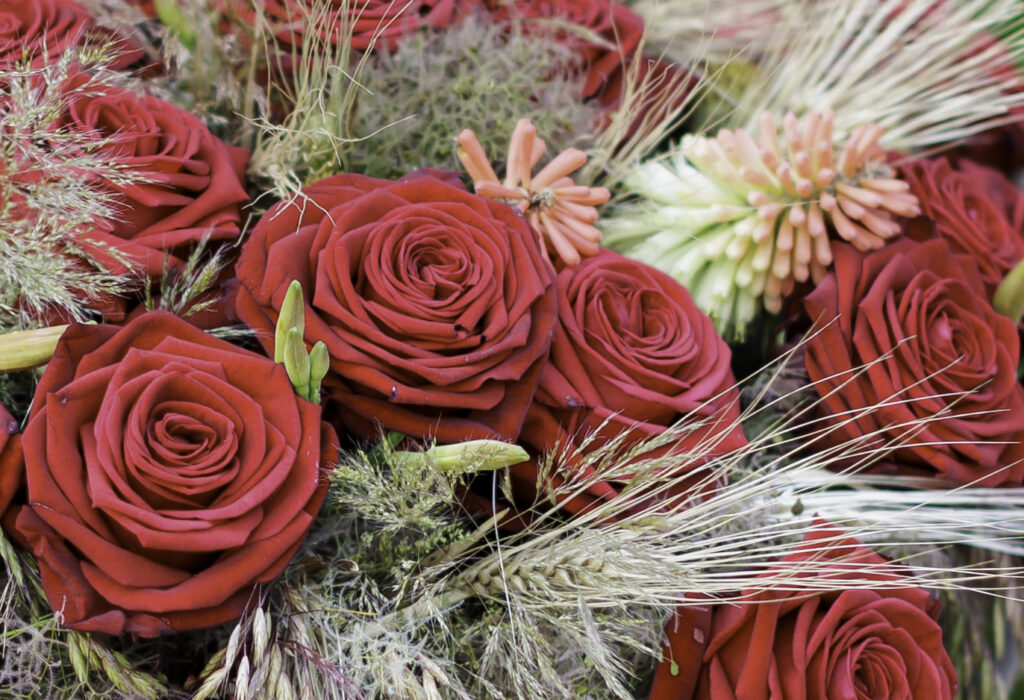
I began by soaking the BIO floral foam and placing it in the basket, positioning it to achieve the desired height. Then I arranged the smoke bush flowers around the edge to define the final size and shape. I added the Red Naomi Futura roses, alternating with more smoke bush, wheat stems, and other foraged materials. The goal was to create a harmonious yet expressive structure.
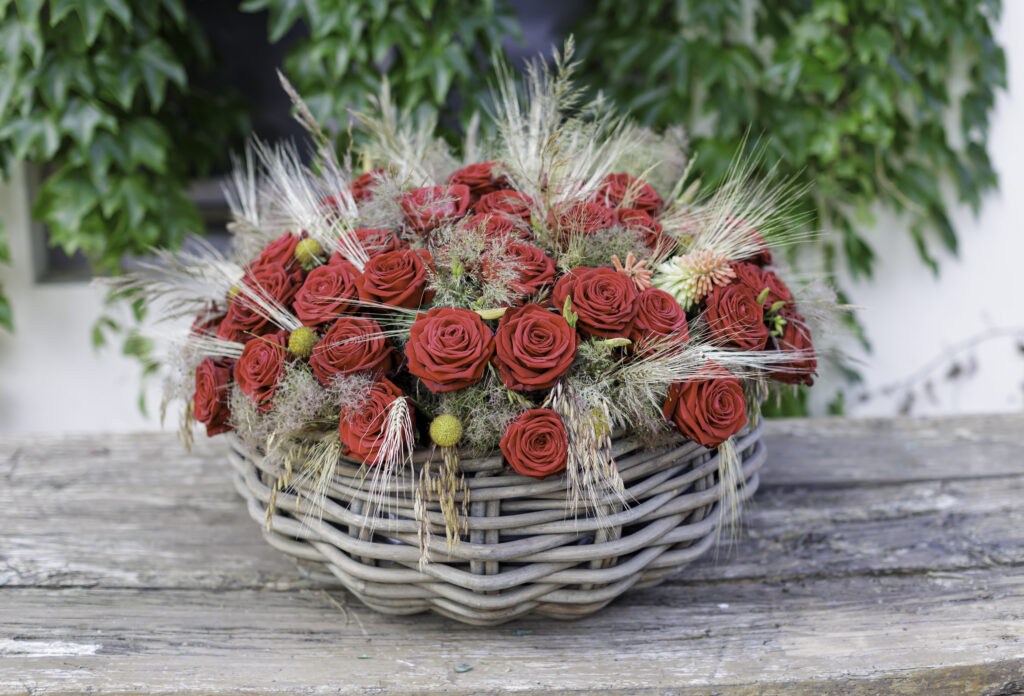
Given the layering of textures in this design, would you describe it as rustic?
Yes, I aimed to keep a rustic feel throughout—not only as a visual direction but also in harmony with the message of the Red Naomi FUTURA rose.
What special name would you give this design, and for what occasion would it be most suitable?
For me, this composition symbolizes love and emotional connection. I envision it for an anniversary, proposal, or other romantic celebration. Its name could be: FUTUR(A)E LOVE—referring not only to the rose variety but also to faith in the future of love.
